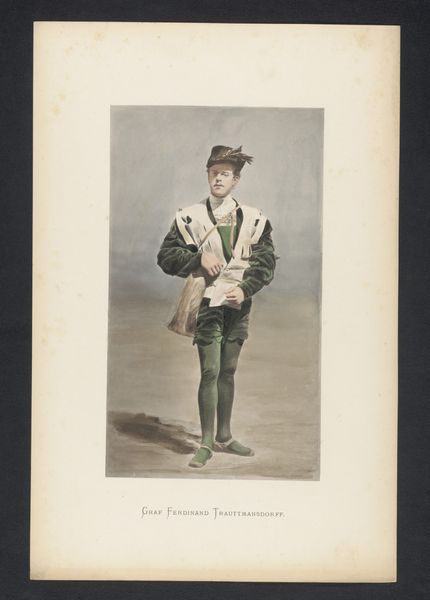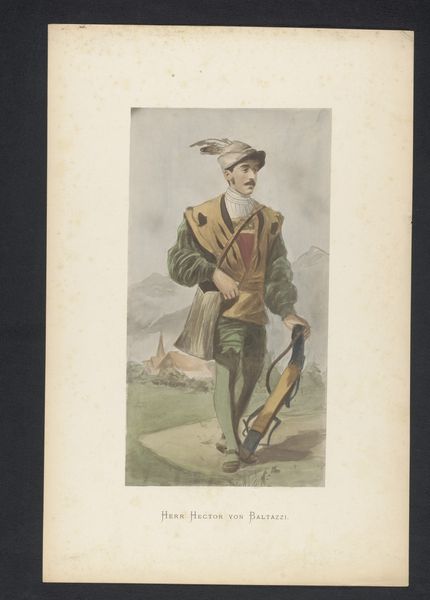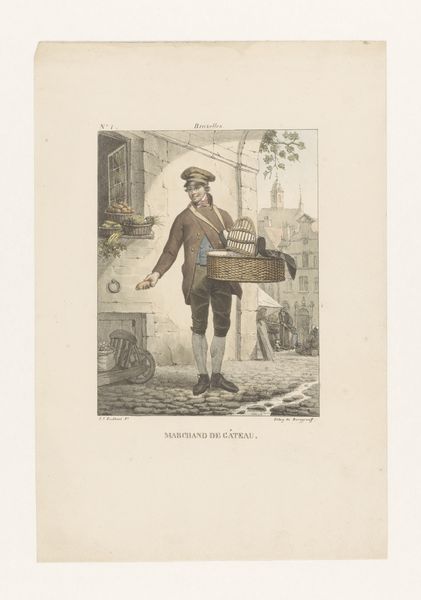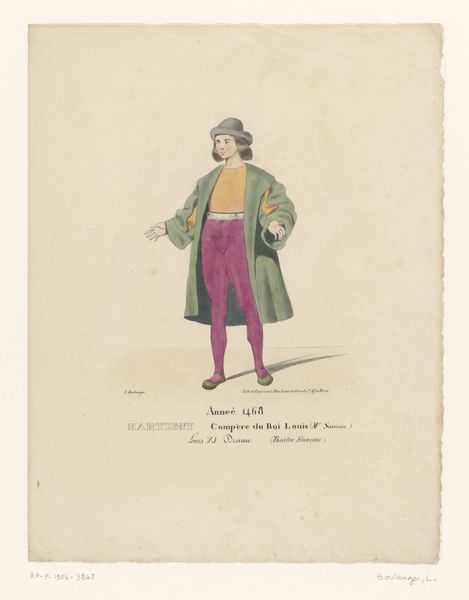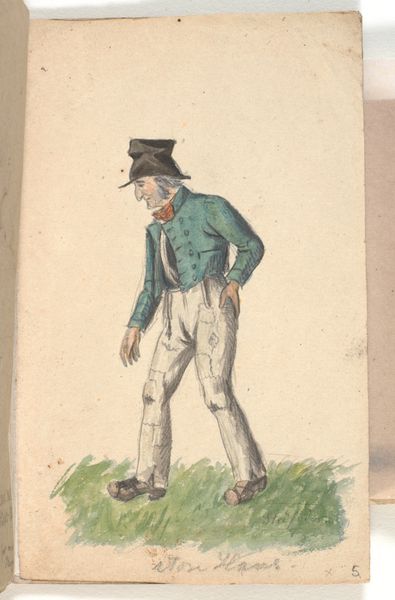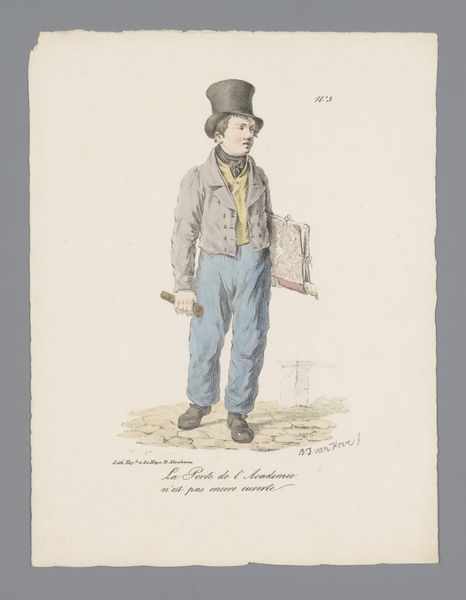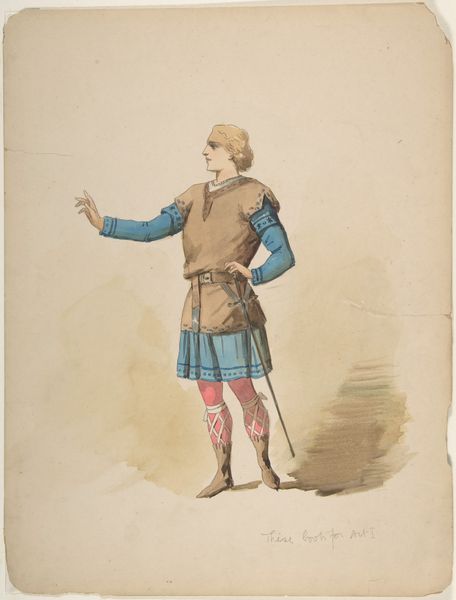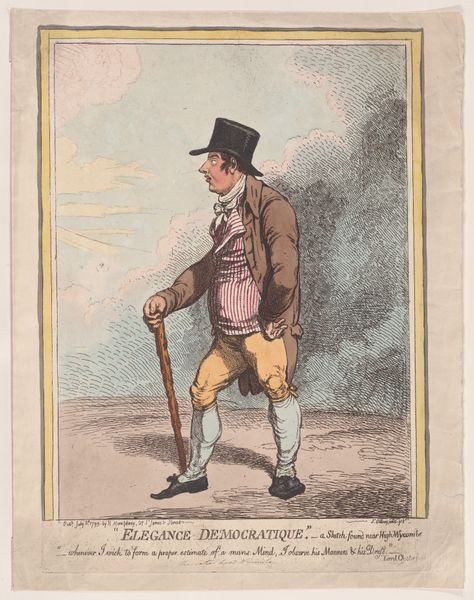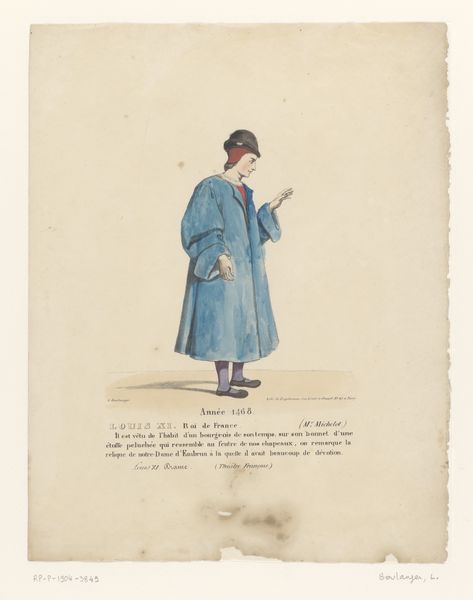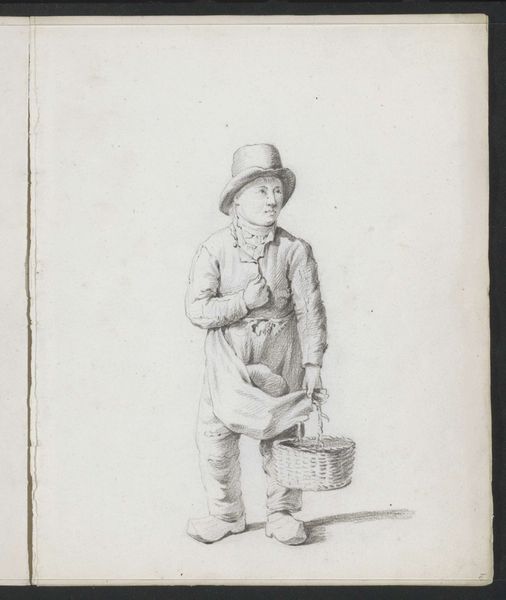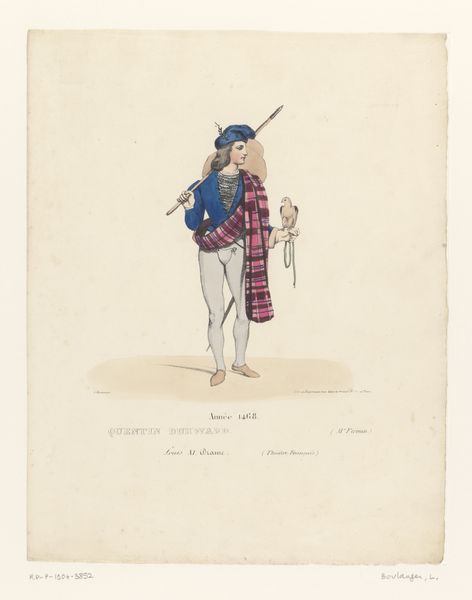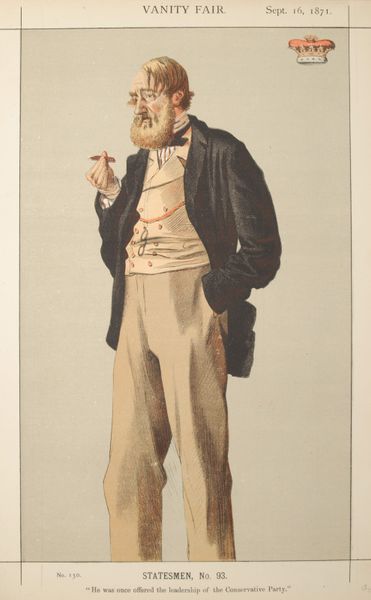
coloured-pencil, print, etching, engraving
#
portrait
#
coloured-pencil
# print
#
etching
#
11_renaissance
#
coloured pencil
#
history-painting
#
engraving
Dimensions: height 365 mm, width 211 mm
Copyright: Rijks Museum: Open Domain
Curator: Looking at this etching with colored pencil accents, “Portret van Alfred von Rossmanit," dating back to sometime between 1880 and 1884, one immediately notices its staged medievalism. Editor: Yes, my immediate thought is 'theatrical costume'. There’s a deliberate crafting of persona happening here that overrides any sense of spontaneous portraiture. I wonder, what kinds of social performances was von Rossmanit involved in? Curator: Precisely. Consider the printing process: an etching, meaning the artist meticulously etched lines into a metal plate to create the image, with the later addition of color. This process necessitates layers of skilled labor, multiple hands contributing to its final form. The resulting "print" makes it accessible, something that could be circulated, copied. We need to ask: to whom was it accessible? What was the context for the materials that made this portrait available at that time? Editor: I agree; accessibility is key. Was this mass-produced for public consumption, or privately commissioned? The subject’s attire signals an interest in history – note the crossbow and feathered hat – was this image made in connection with larger cultural movements invested in notions of German or Austrian history? It strikes me that there is a romanticism present, which hints toward an appeal to national heritage. Curator: Note, too, the smooth application of the colored pencil. This shows an interesting shift away from the idea of artistic 'genius'. There isn't expression so much as precise, craft-based coloring. That says a great deal about changing conceptions of art at the time, the labor that went into making it. Was it an in-house professional employed at a court? Editor: We have to consider also how galleries or museums then and now impact reception, reinforcing certain ideas about portraiture and its value while obscuring details around initial audiences and purposes. Its display invites a particular lens, setting parameters of understanding that deserve our scrutiny. Curator: It invites speculation as to how the subject understood his public presentation of self. Who do portraits like this aim to please? Editor: Thinking about all of the various facets of it that you have named provides some nice points of context for viewing. Curator: And for appreciating the complexity of its creation, circulation, and lasting significance.
Comments
No comments
Be the first to comment and join the conversation on the ultimate creative platform.
